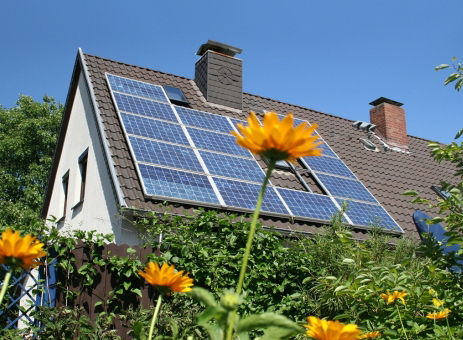WHY SOLAR
Solar energy i.e. energy from the sun provide consistent and steady source of solar power throughout the year. As our non-renewable resources are set to decline in the years to come, it is important for us to move towards renewable sources of energy like wind, hydropower, biomass and tidal. The main benefit of solar energy is that it can be easily deployed by both home and business users as it does not require any huge set up like in case of wind or geothermal power. Solar energy not only benefits individual owners, but also benefit environment as well. Solar energy is one of the most widely used renewable energy source.
HOW SOLAR WORKS
We can change sunlight directly to electricity using solar cells. Every day, light hits your roof's solar panels with photons (particles of sunlight). The solar panel converts those photons into electrons of direct current ("DC") electricity. The electrons flow out of the solar panel and into an inverter and other electrical safety devices. The inverter converts that "DC" power (commonly used in batteries) into alternating current or "AC" power. AC power is the kind of electrical that your television, computer, and toasters use when plugged into the wall outlet.
OTHER SOLAR TECHNOLOGIES
ON-GRID, UTILITY-INTERACTIVE, GRID-INHERITED, OR GRID-DIRECT
- PV panels (multiple panels make up an array)
- required electrical safety gear (i.e. fuses, breakers, disconnects)
- inverter(s)
- monitoring system to monitor energy production (optional)
OFF - GRID SYSTEM
ON-GRID OR GRID-TIED WITH BATTERY BACKUP
Grid-tied systems can be upgraded to include a battery backup: a bank of deep-cycle batteries. The backup battery is charged by both the grid and the solar panels. In the event of an outage, the backup battery will need to be switched on either manually or with an automatic system to provide backup power to the building.
SOLAR DIRECT
These are the simplest of solar-electric systems, with the fewest components. PV-Direct systems don't have batteries and are not connected to utility, so they only provide electricity when the sun is shining. This means that they are only appropriate for a few select applications, notably water pumping and ventilation. A PV-Direct system can be a simple and efficient way to run a fan or a water pump whenever the sun is shining.

